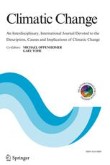
Abstract
Semi-arid regions are known for erratic precipitation patterns with significant effects on the hydrological cycle and water resources availability. High temporal and spatial variation in precipitation causes large variability in runoff over short durations. Due to low soil water storage capacity, base flow is often missing and rivers fall dry for long periods. Because of its climatic characteristics, the semi-arid north-eastern region of Brazil is prone to droughts. To counter these, reservoirs were built to ensure water supply during dry months. This paper describes problems and solutions when calibrating and validating the eco-hydrological model SWIM for semi-arid regions on the example of the Pajeú watershed in north-eastern Brazil. The model was calibrated to river discharge data before the year 1983, with no or little effects of water management, applying a simple and an enhanced approach. Uncertainties result mainly from the meteorological data and observe d river discharges. After model calibration water management was included in the simulations. Observed and simulated reservoir volumes and river discharges are compared. The calibrated and validated models were used to simulate the impacts of climate change on hydrological processes and water resources management using data of two representative concentration pathways (RCP) and five earth system models (ESM). The differences in changes in natural and managed mean discharges are negligible (< 5%) under RCP8.5 but notable (> 5%) under RCP2.6 for the ESM ensemble mean. In semi-arid catchments, the enhanced approach should be preferred, because in addition to discharge, a second variable, here evapotranspiration, is considered for model validation.



Δεν υπάρχουν σχόλια:
Δημοσίευση σχολίου
Σημείωση: Μόνο ένα μέλος αυτού του ιστολογίου μπορεί να αναρτήσει σχόλιο.